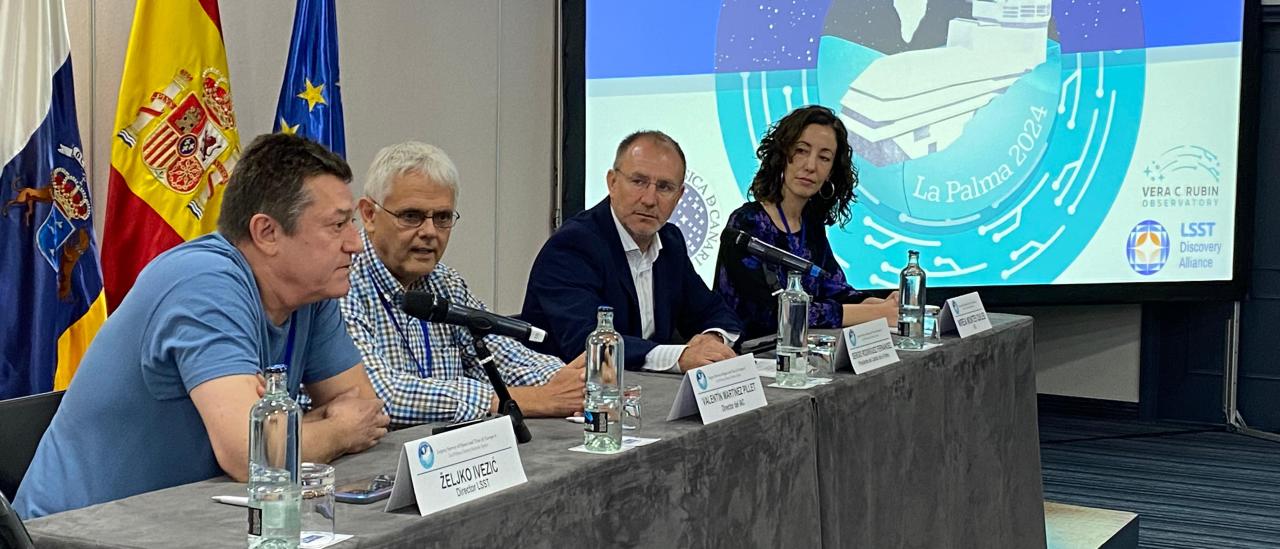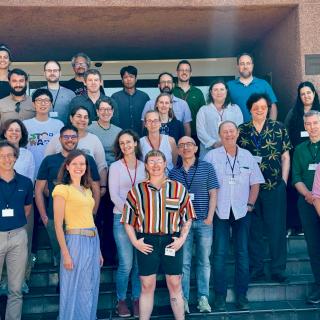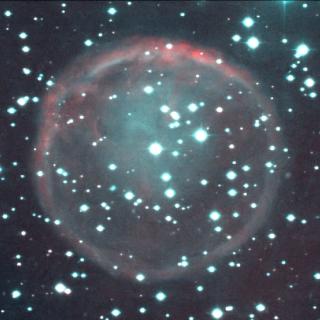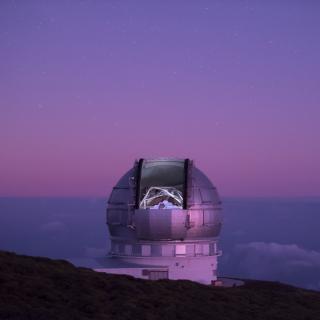The President of the Cabildo of La Palma, Sergio Rodríguez inaugurated this morning the International Conference LSST@Europe 6 which has brought together over 140 people from over twenty countries in the field of astrophysical research.
In the oficial inauguration there was also participation by the Director of the Instituto de Astrofísica de Canarias (IAC), Valentín Martínez Pillet, the director of the LSST constructive project Zeljko Ivezic and the president of the international organizing committee Mireia Montes Quiles.
Sergio Rodríguez noted the importance of this type of scientific meetings for the island of La Palma, and the coordination and relation to the IAC. Rodríguez stressed the importance of the Roque de los Muchachos Observatory, in general, and specifically the Gran Telescopio Canarias (GTC) for the economy, the society and the culture of the island. He also gave a welcome to the visitors and the speakers at this conference and he invited them also to get to know the culture, the gastronomy and the history of La Palma.
The president of the scientific organizing committee, Mireia Montes, reminded us that La Palma is the best possible place to carry out this meeting, both for its infrastructure and for the excellent quality of its sky over the Roque de los Muchachos Observatory. Montes mentioned the perspectives of the LSST project for making exciting astronomical discoveries in the Solar System, in the Milky Way, in objects at high energy and to improve our knowledge about the evolution of galaxies, among other subjects.
Valentín Martínez Pillet thanked the President of the Cabildo of La Palma and the whole population of the island for their welcome and their constant collaboration with the Instituto de Astrofísica de Canarias to make the Roque de los Muchachos Observatory one of the best astronomical observatories in the world. He also insisted on the importance for the IAC of the collaboration with the LSST, a project which will revolutionize astrohysics because it will be able to detect the evolution of astronomical objects. “This telescope is going to carry out what is known as time domain astronomy, and although this is not entirely novel it is important for the IAC to establish collaborations with it at this time”, explained. "The new telescope which will carry out the LSSt programme will issue alerts whenever it detects changes in astronomical objects, so that other telescopes such as the GTC can study them in detail", said.
The representative of the LSST, Zeljko Ivezic, also thanked the collaboration by the local institutions for the celebration of this conference in La Palma. He congratulated those present because many of the participants in the current meeting have collaborated to give an impulse to the project over many years, and they will also be participants in the science which results from the project.
The LSST Project
The International Conference LSST@Europe 6 is taking place at Los Cancajos, Breña Baja (La Palma); from this Monday 16th September until next Friday 20th. At the meeting the latest advances in the LSST project will be presented. This is a front-line initiative in the exploration of the Universe which will be carried out at the Vera Rubin Observatory in Chile, and which involves the close collaboration of the IAC.
The LSST (Legacy survey of Sace and Time) project has the aim of making a new, detailed survey of the sky. To do this it will use a telescope with a primary mirror of 8.4 metres, which is under construction in the north of Chile, and which is planned to be operational in 2025. This telescope will be able to photograph the whole of the available sky in continuous scans, due to its wide field of view.
The LSST will he made with the largest digital camera in the world, (certified in the Guiness Booko of Records) , which has more than 3,200 megapixels. It is hoped that the camera will take some 200,000 images per year (which implies 1.28 petabytes before compression). These figures make the project one of the Big Data projectw with the greatest need for processing in the world, so that the use of modern informatics techniques, notably artificial intelligence, is basic.



